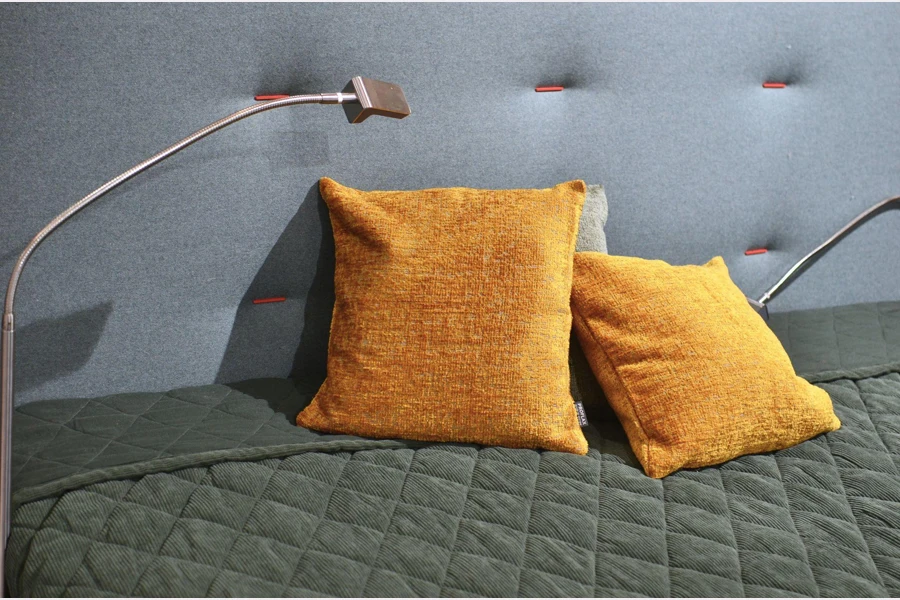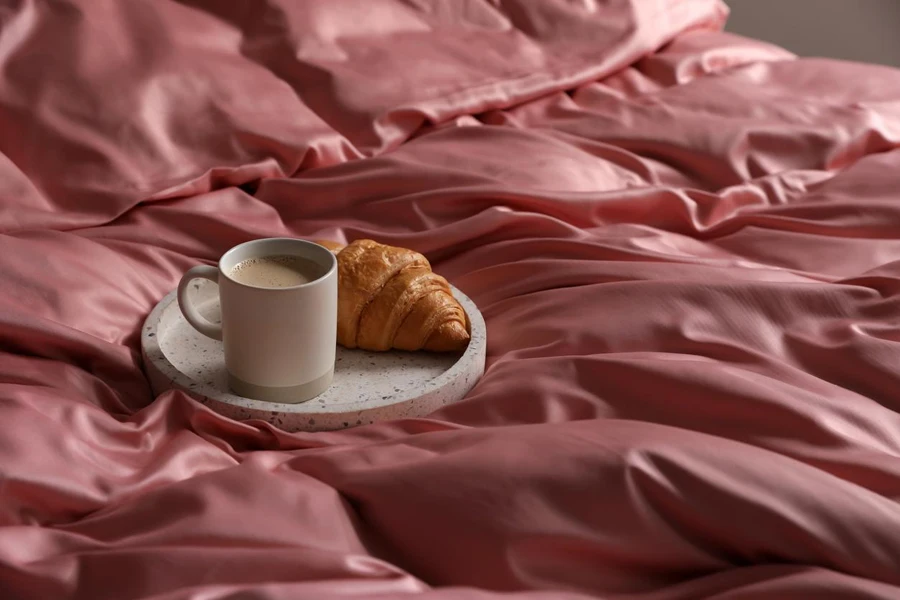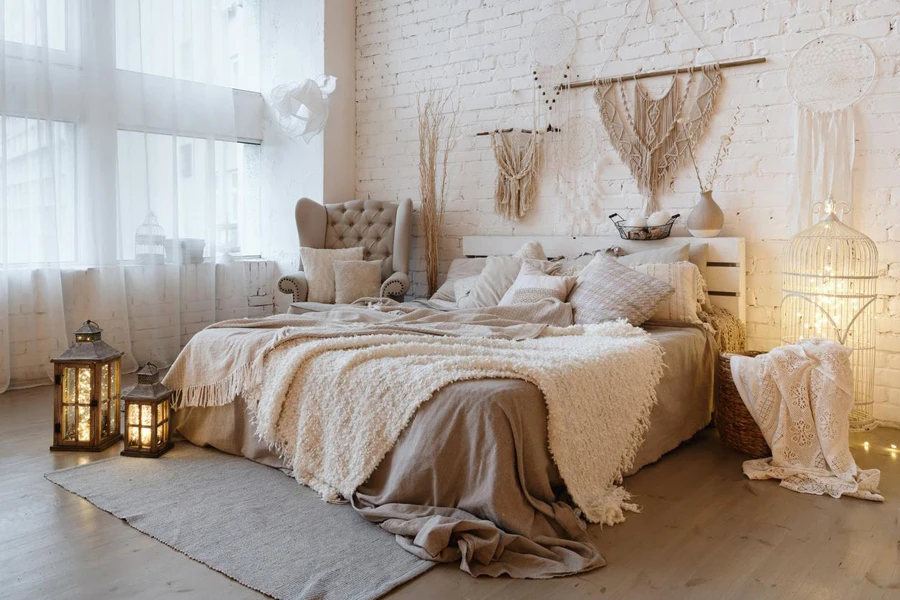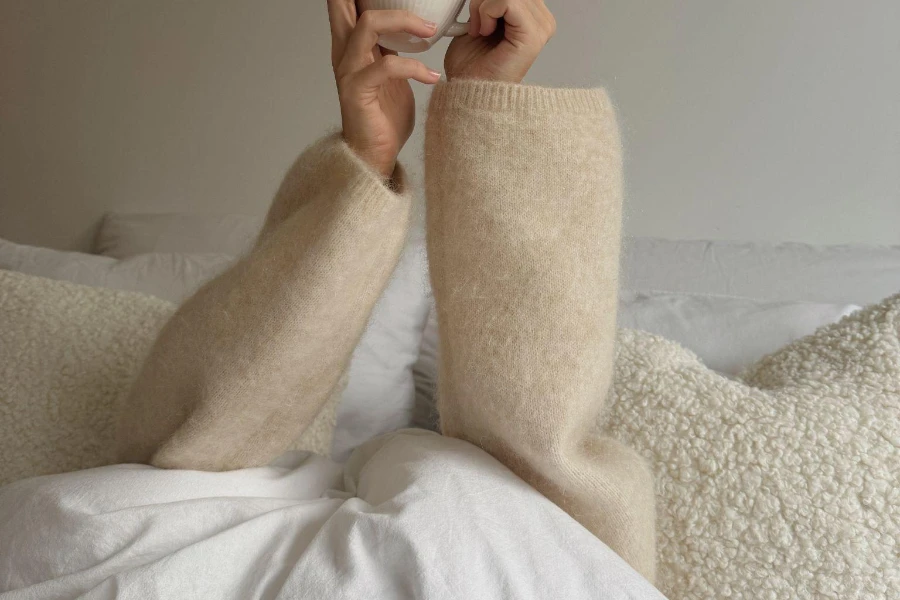As we step into 2024, the choice of a bedding set transcends mere functionality; it becomes an essential aspect of our daily comfort and bedroom aesthetics. In a market rich with diverse materials and styles, selecting the right bedding set is more crucial than ever. It’s not just about the tactile pleasure of soft fabrics but also about how these choices reflect personal style and environmental consciousness. This year, with advancements in textile technology and a shift in consumer preferences, the options are both exciting and overwhelming. Understanding the nuances of each option will empower retailers and consumers alike to make informed decisions that marry comfort with style.
Table of Contents:
1. Market overview
2. Different types and their features
3. Things to consider when selecting products
1. Market overview

The global bedding market, as of 2023, stands at a remarkable USD 79 billion, projected to flourish with a compound annual growth rate (CAGR) of over 6% through 2028, according to Mordor Intelligence. This growth trajectory is fueled by several pivotal shifts in the market dynamics, notably the rising consumer demand for sustainable and eco-friendly bedding options. Organic cotton, bamboo, linen, and other sustainable materials have seen a surge in popularity. Additionally, the integration of technology in bedding, such as smart bedding equipped with temperature-regulating sheets and sleep-tracking capabilities, is on the rise, reflecting the growing influence of the Internet of Things (IoT) in the sector.
In the wake of the pandemic, as people’s focus turned inward toward enhancing their home environments, the bedding market saw a notable shift. Consumers increasingly sought out products that were not only comfortable and durable but also visually appealing. This trend spurred a heightened demand for innovative and high-quality bedding products. Amidst these changes, the e-commerce sector has played a significant role in the market’s growth. Online shopping platforms have revolutionized the bedding industry, offering convenience, a broader range of choices, and often more competitive pricing compared to traditional retail outlets. This shift to digital commerce has enabled bedding companies to expand their reach, personalize customer experiences, and adapt to the evolving consumer behaviors in a post-COVID world.

The home bedding segment, in particular, has been experiencing significant growth, driven by changing consumer preferences, increasing disposable incomes, and a growing awareness of the importance of good sleep hygiene. High-quality, comfortable bedding products have become a priority for consumers, leading to a surge in demand for home bedding. The market’s competitive landscape is diverse, with key players like American Textile Company, Tempur Sealy International, Inc., and Sleep Number Corporation taking the lead. These companies, along with others, are innovating and differentiating their offerings to capture market share and cater to the evolving needs of consumers. The market, while competitive, offers ample opportunities for new entrants and existing players to innovate and grow in the coming years.
2. Different types and their features
The bedding set market is a kaleidoscope of materials, each with unique attributes catering to diverse consumer needs. The primary materials dominating the market are cotton, linen, silk, bamboo lyocell, Tencel™, and synthetics. Each material brings a distinct set of features, balancing durability, comfort, aesthetic appeal, and environmental impact.
Cotton remains a perennial favorite in the bedding market, valued for its natural softness and breathability. Cotton is easy to wash and care for, making it a practical choice for everyday use. However, it’s prone to wrinkles and may not be the most sustainable option, as cotton cultivation can be water-intensive and often involves chemical use.

Linen, derived from the flax plant, is highly regarded for its sustainability and breathability. It’s known for being extremely absorbent, and temperature-regulating, and gets softer with each wash. It is noted that high-quality linen often comes from regions like Belgium, France, and the Netherlands, where the climate is well-suited for flax cultivation. While linen has a higher price point compared to cotton, its durability and ease of care make it a worthwhile investment.
Silk bedding, often considered the epitome of luxury, is praised for its breathability, strength, and lightweight nature. Silk’s anti-wrinkle properties and soft texture make it a preferred choice for those seeking a luxurious sleep experience. However, it is one of the most expensive fabrics and requires careful maintenance.
Bamboo Lyocell emerges as an eco-friendly contender in the bedding market. This material is known for its cooling properties, being extremely breathable, and temperature regulating. It is highlighted that bamboo lyocell’s environmental benefits, using a closed-loop manufacturing process that is eco-friendly and results in minimal waste. Despite its higher price point, bamboo lyocell’s silky softness and hypoallergenic properties make it an attractive choice for environmentally conscious consumers.
Tencel™, a brand name for a range of semi-synthetic fibers, offers comfort and excellent moisture management. Tencel™ products are soft, anti-bacterial, and have a growing presence in the bedding market. However, their durability may not match natural fibers like cotton or linen, and the chemicals used in their production can be a concern for some consumers.

Synthetic fabrics, such as polyester and nylon, provide a cost-effective alternative in the bedding industry. These materials are generally more durable than natural fibers and offer unique benefits like stretch and water resistance. However, their breathability and durability can vary, and they may be prone to pilling and static electricity.
In conclusion, the choice of bedding material hinges on individual preferences and priorities, whether it’s the classic comfort of cotton, the sustainability of linen, the luxury of silk, the eco-friendliness of bamboo lyocell, the modern appeal of Tencel™, or the practicality of synthetics. Each material offers a unique blend of features that cater to different aspects of sleep comfort and environmental considerations.
3. Things to consider when selecting products
When selecting bedding products, several key factors play a crucial role in ensuring both satisfaction and sustainability. Material quality, thread count, design trends, and eco-friendliness are paramount considerations for consumers and retailers alike.
Material quality: The first step in choosing bedding sets is understanding the quality of materials used. The texture, durability, and breathability of the fabric should be scrutinized. For instance, cotton is known for its comfort and breathability, while silk offers a luxurious feel but requires more delicate care. Linen, on the other hand, is known for its environmental sustainability, provides durability and improves with age. Assessing the material quality involves understanding the source of the fabric and the manufacturing process, as these factors significantly impact the final product’s feel and longevity.

Thread count: Often mistaken as the only indicator of quality, thread count is a critical, yet sometimes misleading, aspect of bedding selection. As pointed out, a higher thread count does not always equate to higher quality. It’s essential to understand that thread count is the number of threads woven into one square inch of fabric. While a higher thread count can mean a finer weave and a softer feel, it can also result in heavier and less breathable fabric. Conversely, a lower thread count can offer more breathability. Consumers should consider thread count in conjunction with material type to make an informed choice.
Design trends: Keeping up with design trends is crucial for retailers and consumers. According to Hollywood Reporter, the current trend leans towards bedding sets that are not only functional but also aesthetically pleasing. This includes considering contemporary color schemes, patterns, and textures that complement the overall bedroom decor. Bedding sets should align with the latest interior design trends while offering the versatility to blend in with various room styles.
Eco-friendliness: With growing awareness about environmental impact, eco-friendliness has become a significant factor in bedding selection. Materials like bamboo lyocell and organic cotton offer sustainable alternatives without compromising on quality. These materials are produced with minimal environmental impact, often utilizing eco-friendly manufacturing processes. Consumers are increasingly leaning towards products that align with their values of sustainability and reduced environmental footprint.
Balancing function and style: Ultimately, the selection of bedding sets involves a balance between functional requirements and style preferences. While material quality and thread count determine comfort and durability, design trends and eco-friendliness reflect personal style and ethical choices. Consumers and retailers need to navigate these factors to find bedding products that not only meet the functional requirements of comfort and longevity but also resonate with contemporary design aesthetics and sustainability principles.

Conclusion
As we navigate the bedding market for 2024, the key takeaways center around a harmonious blend of quality, comfort, and sustainability. The right bedding set is not just about a luxurious feel or aesthetic appeal; it’s a thoughtful combination of material quality, appropriate thread count, and adherence to contemporary design trends, all while ensuring eco-friendliness. The evolving consumer awareness demands bedding that not only promises a restful sleep experience but also aligns with environmental sustainability. Retailers and consumers alike are encouraged to delve deeper into the characteristics of different materials, from the classic comfort of cotton to the luxury of silk and the eco-conscious choice of bamboo lyocell. In doing so, one can make informed decisions that contribute to both personal well-being and the well-being of our planet. The bedding choices of 2024 reflect a broader trend towards mindful consumption, where quality, comfort, and sustainability become the pillars of decision-making in the home and garden sector.




